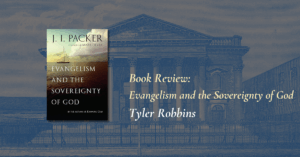I recently published an article arguing that multi-site and multi-service churches are a metaphysical impossibility. In what follows I intend to offer a short-form summary of my main argument. My goal is to either convince you that multi-site and multi-service churches can’t exist (which I argue is the case), to whet your appetite to read the full piece, or to get you to think my view is bad enough to warrant a critique of your own. For the sake of space, I won’t rehash the three other arguments from my full article here. I will focus only on my main one because I haven’t seen anyone else ever argue it and I think is the most persuasive regardless of your church tradition.
Here is the essence of my main argument: The definition of church is insufficient to deny multi-site and multi-service churches. Rather, the definition of a group is necessary and sufficient for denying multi-site and multi-service.
Now, there are a few points I need to clarify before I defend my main argument.
First, what is a multi-site or multi-service church?
Multi-site churches create new geographical spaces for worship while multi-service churches create new temporal spaces for worship.
For example, a multi-site church is one that has two “sites” or “campuses” in different locations. A multi-service church is one that has multiple services at different times in the same location.
Suffice to call these two permutations “multi-church” for the sake of ease.
Second, on multi-church models, what is essential for a church? Or for my purposes, why does time and space not matter?
I hash out a bunch of options in my article and conclude this is the core essential property of a church on multi-church models: The belief and commitment that they (either the sites or services) are the numerically identical local church despite change in time and space. Everything is negotiable except for the unified belief and commitment. Budgets can change. Leadership can change. Names can change. But the churches sites or services must all agree that they are part of the numerically same church.
For example, First Baptist Church can have three services and have the same leadership team. People could assume it’s the same leadership team that makes it the same church, but on these multi-church models, this could change. What can’t change is that all of the “members” agree that they are the same exact church no matter how many new sites or services they start.
Third, what is the definitional argument against multi-church and why is it insufficient?
Jonathan Leeman is a champion of this position. Admittedly, I do think his recent book on the topic has a far more sophisticated usage of this argument and I agree for the most part, but I simply think it’s not a powerful argument for convincing those that don’t already agree. I think this is pretty evident in the responses from those that are multi-churches.
Here’s my summary of the definitional argument:
- The church is defined as an assembly
- Assembly means spatiotemporal coextensive gathering
- ∴Spatiotemporal coextensive gathering is necessary for church identity
I think this argument is fine so far as it goes, but there have been a fair number of legitimate critiques of it begging the question by smuggling in a particular definition of assembly into P2. Not everyone agrees there. So, I think a stronger argument can be made.
Finally, here is my argument. I draw from group theory. You can find a nice primer on group theory here if you aren’t familiar and want to learn more.
Drawing on the “social” nature of the church I argue as follows:
- The church is a social group
- The activities of the church required for it to exist as social group necessitate spatiotemporal coextensive gathering
- ∴The church must gather coextensively
Now, both premise 1 and 2 of this argument do need a little more flesh on the bones to show why the argument runs.
Premise 1 assumes a realist understanding of groups. There is something more in a group than just a handful of individuals. Something new emerges. Instead of it just being Todd and Paul singing together on Sunday as individuals, it’s now a church—a group. Now, admitting of groups into one’s ontology is admittedly controversial, but I think it makes good sense for several reasons. I also think I can avoid overly bloated ontologies where suddenly everything is a group, like the clocktower on my desk and my computer screen. You can read the full piece for all the details on this. For now, I’ll simply assert that I think Scripture requires a realist understanding since it affirms the existence of the church as a legitimate group.
Premise 2 assumes that for the church to be a group it must perform certain actions, be able to have certain beliefs, pursue certain goals, and be held morally responsible. If any of these is lacking, it’s not a group. I argue that spatiotemporal coextensive gathering is necessary for the church as a group because without it, it lacks the proper intentional states required for these types of actions. People need the ability to have direct knowledge and exert direct action to be present in the proper way to be considered members of the group.
Based on this, I expand the argument slightly:
- Group Realism obtains
- The church is a social group
- The church is required to perform actions such as hold beliefs, interact as a social space (e.g. greet one another, admonish one another, sing to one another) and be held responsible to maintain this group status
- The actions the church is required to perform as a group require spatiotemporal coextensive gathering
- ∴Spatiotemporal coextensive gathering is required for the church
So, I think if the church is truly a group it must interact as a social space which requires spatiotemporal coextensive gathering. Definitions of “assembly” aside, the church can’t actually be the church without meeting at the same time in the same place regularly.
There are some potential objections that could be raised here that I want to address. For example, what is it that makes First Baptist Church the same group on Sunday December 6th as Sunday December 13th given the lack of temporal continuity? There is a gap in the group’s existence. I would simply deny that there is a gappy existence. Coextensive spatiotemporal gathering isn’t a constant requirement. People can come and go and it remain the same group. What is required is regular gathering for the continued existence of the group. But what counts as regular? What if in situations like COVID-19, regular coextensive spatiotemporal gathering has been suspended for months (maybe years!)? If the group can persist that long, does regular lose its potency? Why is this really a requirement for the group if regular could mean every few years? Most multi-church instances actually would meet the requirement if this were the case. Well, I do think there is a level of vagueness to this, which I am comfortable accepting, but I think regular means every Sunday minus extenuating circumstances that can pause regular coextensive spatiotemporal and the group remain a group. But the regular coextensive spatiotemporal must resume. How many Sunday’s can pass before a group hits that mark? I’m not sure. I would lean toward whenever the church has decided to no longer regularly gather in a coextensive spatiotemporal way for the long-term. But that is highly context dependent and admittedly very rare.
Therefore, I think multi-church instances aren’t actually the same church. They are numerically distinct churches (or not churches at all in the case of “online only” instances).
Author
-

Jordan L. Steffaniak is President of the London Lyceum and Publisher for Hanover Press. He is a PhD candidate in Philosophy at the University of Birmingham, UK, and teaches at several institutions. He has a wonderful wife and three sons. He also works in the financial industry.
View all postsRecent Posts




